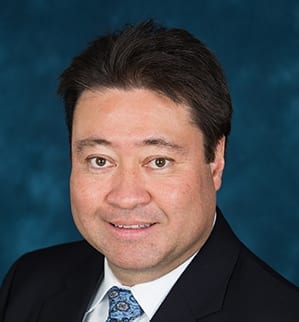
I want to start this month’s editorial off by thanking all the first responders and health care professionals who are working on the front lines during this pandemic. It is times like these where we can see the best in humanity; people working selflessly and tirelessly to help others. I also want to thank the people who work in manufacturing, the supply chain and the pharmacies and grocery stores to keep critical goods stocked on the shelves. The work behind the scenes may not be as visible, but it is just as critical and important to all of us. The other trait of humanity that we are seeing is our ability to adapt. We are seeing countless companies switch over their manufacturing to produce PPE, ventilators, pharmaceuticals, and other medical supplies. We must thank all the engineers who have worked to switch production lines over. It is amazing how quickly these companies have been able to start producing new products. We will all get through this together; because, that is who we are as people. When we collectively put our minds and wills into something, we can overcome anything.
Now, on to the business part of this month’s editorial. I trust you have heard that we have fully released our new FDT IIoT Server (FITS™) / FDT 3.0 standard to the marketplace including all of the developers’ tools necessary to build products and services that integrate this exciting new technology. I am very excited to see the new products and capabilities that will be introduced to the marketplace built on the FITS standards. Created on the long legacy of the rock solid FDT standard, we now release the features and capabilities that are needed for IIoT, remote monitoring, mobility, and IT/OT integration. This is one of the most dynamic and exciting times in the 20 plus year history of the FDT standard.
Let us take a closer look at some of the features and benefits that the new standard brings:
- Skid to Cloud Deployment: The new FDT standard is completely platform independent in its development and deployment. The server environment can scale from a small, low cost Linux box running a remote OEM skid asset management environment up to a multi-facility, enterprise-wide, cloud-based installation. Any class FDT Server is securely accessible through any authenticated web browser or OPC UA client from anywhere in the world. For the vendor and services community, this scalability is achieved with one development environment that can deploy under a wide variety of operating systems and server classes.
- A Robust Security Architecture by Design: We started with a security analysis before the first line of the FITS specification was written and we have maintained a strong security posture throughout by utilizing a separate oversight committee staffed with security experts. Every point of access is protected with industry standard TLS authentication and encryption which can be further hardened through a customer specified VPN. Authentication of servers and clients is carried out through 509v3 certificates. User authorization follows our time tested FDT role-based security model. The security industry does not stand still, and neither will we as we continue to bolster our FDT security posture.
- Remote Access and Mobility: We started this update to the FDT standard with a broad industry survey to understand the emerging requirements for remote access and mobility – this has served as the centerpiece of our development activities. The new FDT standard fully enables authorized remote access from anywhere on the plant floor, within the enterprise or anywhere in the world – all with a standard web browser or OPC UA client on any authorized desktop, laptop, tablet, phone or IIoT device. The recent COVID-19 lock downs have truly underscored the value of this type of flexible, secure remote access.
- IT/OT Integration: Many process industries and manufacturing plants have begun to realize the benefits of cross pollinating the information technology and operations technology departments. The new FDT standard further drives these benefits by allowing deployment topologies that support incumbent architectural requirements of the enterprise. We further enhanced the value of the FDT Server through a fully integrated OPC UA Server within the FDT Server. The FDT Server publishes a full data schema that can be directly browsed by any authorized OPC UA client anywhere in the enterprise. This architecture eliminates the need for the PLC or DCS to be the broker of all information between the plant floor and the enterprise business systems.
- Compatibility: The FDT Standard has been deployed for decades as a single user, desktop environment resulting in the largest installed base of any asset management and device configuration tool or standard. To support and protect this installed base, the new FDT standard is deployable in this exact same configuration allowing legacy and new DTMs to be freely mixed in the same topology. While the older DTM architecture may preclude some of the leading-edge features of the new FDT standard, no existing functionality is lost.
To produce a new standard of this scope has required an army of experts working around the clock towards a common vision. On behalf of the FDT Group Board of Directors, I would like to thank everyone that has contributed to this amazing journey. In particular, I would like to thank the leaders of the various parts of the technical organization that brought us to this point in record time: Suriya Kumar Selvaraj (Yokogawa) our Vice President of Technology, Dr. Thomas Hadlich (Rockwell Automation) for leading our Architecture and Specification Team, Mr. Peter Jack (CodeWrights) for leading our Security Team, Mr. James Loh Chia Woon (Yokogawa) for leading our Test and Certification Team, Mr. Benedikt Spielmann (Endress+Hauser) for leading our Style Guide Team and Mr. Manfred Brill for leading the Common Components Teams.
Lee Lane, Chairman of the FDT Board of Directors